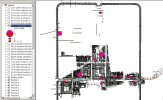
Figure 27: Gaming counters and die (inv. nos 4254 and 4258) from room 1 in the Casa del Menandro in Pompeii (photo P. Allison)
Numerous glass counters found at Vetera I have been considered by Hanel (1995, 249) to be gaming counters (Figure 27). Many of the bone discs with holes from the Insula del Menandro in Pompeii can be shown either to be jewellery, spindle whorls or furniture fittings, according to the size of the disc and of their central hole (Allison n.d. 1). Some of these may have been reused as gaming counters, however. A bone disc with a central hole (J8) was identified as such by Hanel (1995, 285).
Following a review of legacy systems and in line with broader ADS practice, the interactive map element of this article has been decommissioned. The full underlying set of data is still available for download from the digital archive.

Screendump of ArcGIS query - (GA1), gaming items
Of the forty-four glass gaming counters recorded, twenty-six were found on the surface, unprovenanced. Another three were found in a trench through the fortifications in the north-west part of the fortress and one near the north gate. Within the central excavated area, three in Building a, one in Building A and all five in Building G were from pre-Claudian contexts. This means that only five are actually from relatively good contexts and these are quite scattered, one in each of the garden of palace P, Building S, barracks V, Building T, and in the central open area in front of Building A. This is not a particularly significant pattern but it is perhaps notable that they occur mainly in the fronts of buildings off the eastern part of the via principalis.
Adding in possible gaming items to the above plot means the inclusion of only one bone disc found in Building Z.
In summary, it is notable that no such items were found in Claudian-Neronian contexts in the administrative buildings or the tribune's houses. The pattern is by no means substantial but it points to gaming activities being most likely to have taken place in the buildings bordering the eastern half of the via principalis.
© Internet Archaeology
URL: http://intarch.ac.uk/journal/issue17/4/8.4.html
Last updated: Mon Apr 4 2005